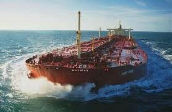JP-A1
Description
Jet A1 is the standard jet fuel type in the Europe since the 1950s and is only available there. Jet-A1 is a kerosene grade of fuel suitable for most turbine engined aircraft. It is produced to a stringent internationally agreed standard, has a flash point above 38°C (100°F) and a freeze point maximum of −47°C. It is widely available outside the U.S.A. Jet-A1 meets the requirements of British specification DEF STAN 91- 91 (Jet-A1), (formerly DERD 2494 (AVTUR)), ASTM specification D1655 (Jet-A1) and IATA Guidance Material (Kerosine Type), NATO Code F-35. Compared to Jet A Jet-A1 is similar to Jet A, except for its lower freezing point of −47 °C (vs −40 °C for Jet A). Like Jet A, Jet- A1 has a fairly high flash point of 38 °C (100 °F), with an autoignition temperature of 210 °C (410 °F).
Jet-A1 can be identified in trucks and storage facilities by the UN number 1223 Hazardous Material placards. Jet-A1 trucks, storage tanks, and pipes that carry Jet-A1 are marked with a black sticker with a white "Jet-A1" written over it, next to another black stripe. Jet-A1 will have a clear to straw color if it is clean and free of contamination. Water is denser than Jet-A1, and will collect on the bottom of a tank. The US commercial fuels are not required by law to contain antistatic additives, and generally do not. The annual U.S. usage of jet fuel was 21 billion gallons (80 billion litres) in 2006.
Specifications
Aviation Kerosene Colonial Grade A1
PRODUCT: ORIGIN: FLASH POINT: AUTOIGNITION TEMP:
Standard Colonial Grade JA1 Russian / CIS 38 °C (100.4 °F) 43.15 MJ/kg
FREEZING POINT: OPEN AIR BURNING TEMPERATURES: DENSITY AT 15 °C (59 °F) SPECIFIC ENERGY
43.15 MJ/kg 287.5 °C (549.5 °F) 0.8075 kg/L 43.15 MJ/kg
